First season 1873 All-time record 829–383–50 (.677) Division Division I (NCAA) | Seating capacity 30,323 Bowl record 1–0 (1.000) Colors Crimson, White, Black | |
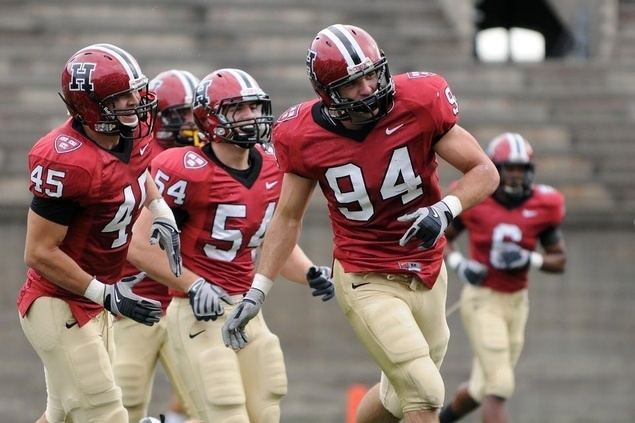 | ||
Profiles | ||
The Harvard Crimson football program represents Harvard University in college football at the NCAA Division I Football Championship Subdivision (formerly Division I-AA). Harvard's football program is one of the oldest in the world, having begun competing in the sport in 1873. The Crimson has a legacy that includes nine national championships and 20 College Football Hall of Fame inductees, including the first African-American college football player William H. Lewis, Huntington "Tack" Hardwick, Barry Wood, Percy Haughton, and Eddie Mahan. Harvard is the eighth winningest team in NCAA Division I football history.
Contents
- Early history
- NCAA Division I subdivision split
- Recent history
- HarvardYale football rivalry
- Harvard Stadium
- College Football Hall of Fame inductees
- Harvard players in the NFL
- All Americans
- References
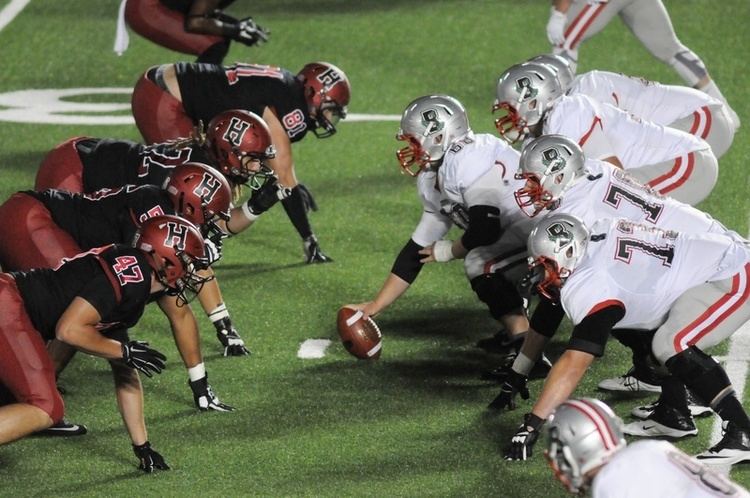
Early history
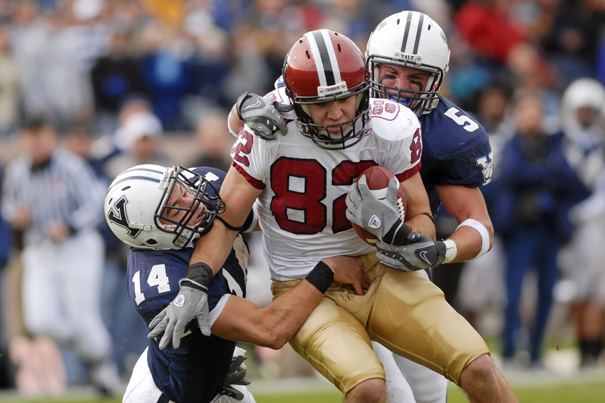
The Harvard Crimson was one of the dominant forces in the early days of intercollegiate football, winning 9 college football national championships between 1890 and 1919. In both 1919 and 1920, headed by All-American brothers Arnold Horween and Ralph Horween (who also attended Harvard Law School), Harvard was undefeated (9–0–1, as they outscored their competition 229–19, and 8–0–1, respectively). The team won the 1920 Rose Bowl against the University of Oregon, 7–6. It was the only bowl appearance in Harvard history.

In the forty-year period from 1889 to 1928, Harvard had more than 80 first-team All-American selections. Under head coach Percy Haughton, Harvard had three consecutive undefeated seasons from 1912 to 1914, including two perfect seasons in 1912 and 1913.
Harvard claims the following national championships:
NCAA Division I subdivision split
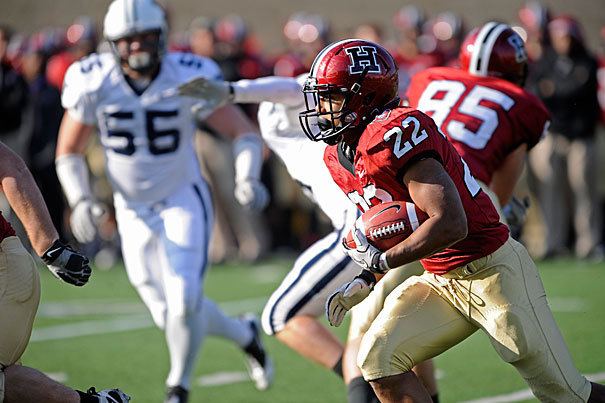
The NCAA decided to split Division I into two subdivisions in 1978, then called I-A for larger schools, and I-AA for the smaller ones. The NCAA had devised the split, in part, with the Ivy League in mind, but the conference did not move down for four seasons despite the fact that there were many indications that the ancient eight were on the wrong side of an increasing disparity between the big and small schools. In 1982, the NCAA created a rule that stated a program's average attendance must be at least 15,000 to qualify for I-A membership. This forced the conference's hand, as only some of the member schools met the attendance qualification. Choosing to stay together rather than stand their ground separately in the increasingly competitive I-A subdivision, the Ivy League, along with several other conferences and independent programs moved down into I-AA starting with the 1982 season (a number of these teams have since returned to I-A/FBS).
Recent history

Since the formation of the Ivy League in 1956, Harvard has won outright or shared 17 Ivy League championships (8 outright; 9 shared), 1961 (6-3), 1966 (8–1), 1968 (8–0–1), 1974 (7–2), 1975 (7–2), 1982 (7–3), 1983 (6–2–2), 1987 (8–2), 1997 (9-1), 2001 (9–0), 2004 (10–0), 2007 (8–2), 2008 (9–1), 2011 (9-1), 2013 (9-1), 2014 (10–0) and 2015 (9-1). The Crimson are behind Penn and Dartmouth's 18 Ivy League Football Championships.
Harvard–Yale football rivalry
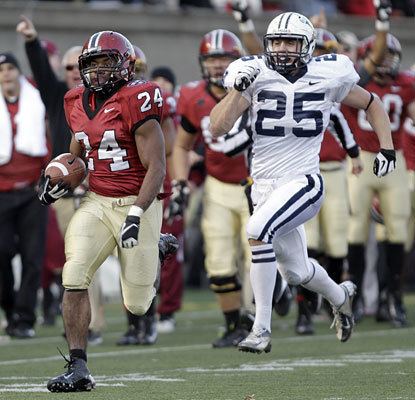
Harvard and Yale have been competing against each other in football since 1875. The annual rivalry game between the two schools, known as "The Game", is played in November at the end of the football season. As of 2015, Yale led the series 65-59-8. The Game is the second oldest continuing rivalry and also the third most-played rivalry game in college football history, after the Lehigh–Lafayette Rivalry (1884) and the Princeton–Yale game (1873). Sports Illustrated On Campus rated the Harvard–Yale rivalry the sixth-best in college athletics in 2003. Ted Kennedy played football for Harvard and caught a touchdown pass in the 1955 Harvard/Yale game. In 2006, Yale ended a five-game losing streak against Harvard, winning 34–13. That Harvard winning streak was third longest in the history of the series, after Yale's 1902–1907 six-game winning streak and Yale's 1880–1889 eight-game winning streak. Harvard has since beaten Yale in 2007, 2008, 2009, 2010, 2011, 2012, 2013, 2014 and 2015. The Game is significant for historical reasons as the rules of The Game soon were adopted by other schools. Football's rules, conventions, and equipment, as well as elements of "atmosphere" such as the mascot and fight song, include many elements pioneered or nurtured at Harvard and Yale.
Harvard Stadium
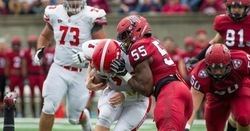
Harvard Stadium is a horseshoe-shaped football stadium in the Allston neighborhood of Boston, Massachusetts, in the United States. The stadium is an important historic landmark. Built in 1903, it is the nation's 2nd oldest stadium. Penn's Franklin Field is the oldest still in use (1895). It was also the world's first massive reinforced-concrete structure, and considered at the time of construction to be the 'finest structure of its kind in the world'. However the structure was completed in just six months, mainly by the efforts of Harvard students, and for a budget of $200,000. Thus 'the stadium represents the thought, the money, the ideas, the planning, and the manual labor of Harvard men'. As such, it is one of four athletic arenas distinguished as a National Historic Landmark (the Los Angeles Memorial Coliseum, Rose Bowl and the Yale Bowl are the other three). The stadium seats 30,323. Temporary steel stands were added in the stadiums to expand capacity to 57,166 until 1951. Afterward, there were smaller temporary stands until the building of the Murr Center (which is topped by the new scoreboard) in 1998. In 2006, Harvard installed both FieldTurf and lights.
College Football Hall of Fame inductees
As of 2010, 20 Harvard Crimson football players and coaches have been inducted into the College Football Hall of Fame. The inductees from Harvard are as follows:
Harvard players in the NFL
Over 30 players from Harvard have gone on to play in the National Football League.
All-Americans
Since the first All-American team was selected by Caspar Whitney in 1889, more than 100 Harvard football players have been selected as first-team All-Americans. Consensus All-Americans are noted below with bold typeface.
